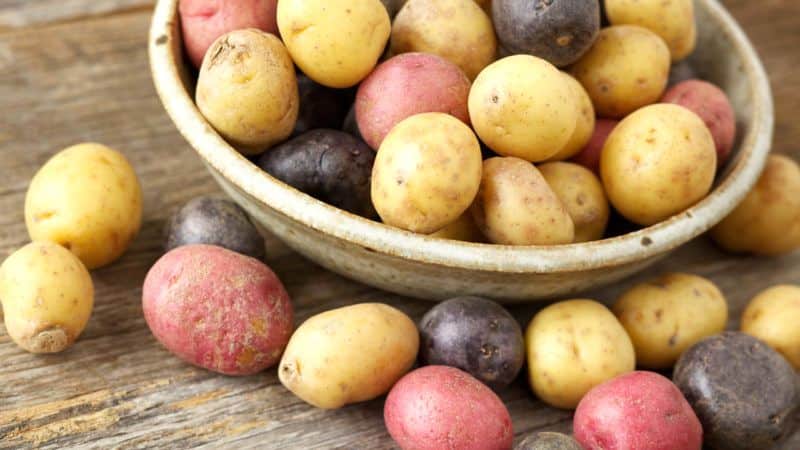

By Terita Heath-Wlaz
For years after transitioning to a more plant-based diet, I didn’t eat a lot of “starchy vegetables.” I’d heard that leafy greens like spinach and chard were better for me than starchy vegetables like corn, peas and potatoes. So I ate the leafy greens. A lot!

But there’s more to the picture of sound nutrition than a ranked list of veggies. Take a close look at the way starchy and non-starchy vegetables behave in our bodies and you might be surprised to discover good reasons to eat both kinds of plant foods.
What Are Starchy and Non-Starchy Vegetables?
Vegetables are labeled “starchy” when they contain more carbohydrates and more calories compared to other (“non-starchy”) vegetables. Here’s a list of common vegetables in the “starchy” category: corn, peas, potatoes, zucchini, parsnips, pumpkin, butternut squash and acorn squash.
The non-starchy vegetables category is much larger and includes veggies like spinach, celery, broccoli, radishes, onions, garlic, tomatoes, cucumbers, carrots and beets.
Non-starchy vegetables deliver a powerful punch of vitamins, minerals and phytonutrients. Many veggies in this class (like broccoli, onions and tomatoes) provide a wealth of benefits ranging from cancer prevention to taming inflammation to improving cholesterol. Because of these clear benefits, health advice regarding non-starchy veggies is nearly unanimous: eat more!
But where does that leave the starchy vegetables?
Unique Benefits of Starchy Vegetables
If you’re someone who tries to limit your intake of starchy vegetables because of the words “high-carbohydrate” and “high-calorie,” consider two ways that these underdog veggies can improve your health—one of which is unique to starchy vegetables.
First of all, starchy vegetables are by no means devoid of vitamins and minerals (even if they might not shine as brightly as kale).
A serving of green peas contains more vitamin A than you need in a single day, almost half your vitamin C and a fifth of your daily iron. Butternut squash and pumpkins contain beta carotene that help preserve the health of your bones, skin, eyes and immune system. And all the starchy vegetables contain a good dose of fiber.
Secondly, the carbohydrates and calories in starchy vegetables help you feel full after a meal. (Try feeling full eating nothing but spinach. It’s hard!)
Feeling satisfied really matters to your physical and emotional health. Eating starchy vegetables can reduce the urge to snack between meals, which helps you feel confident that your plant-based diet is nourishing you.
The bottom line is that both kinds of vegetables contribute something important to your overall health; in fact, even the American Diabetes Association gives the green light to starchy vegetables for those who need to tightly manage their glucose levels. So go ahead and enjoy those veggies in abundance. To your health!
This article was reposted with permission from our media associate Care2.

 233k
233k  41k
41k  Subscribe
Subscribe 